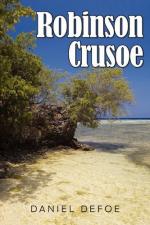|
This section contains 6,743 words (approx. 23 pages at 300 words per page) |

|
SOURCE: "Robinson Crusoe and the Uses of the Imagination," in Journal of English and Germanic Philology, Vol. 91, No. 2, April, 1992, pp. 179-202.
In the following excerpt, Foster contends that Crusoe exhibits conflicting impulses—one toward submission, the other toward self-assertion—and that Defoe himself enacts the same division throughout Robinson Crusoe.
… In Crusoe's narrative, the allegorical organization of experience is perhaps strongest in the opening pages. Crusoe's single, obsessive trait is his mysterious compulsion to ramble, and this trait possesses him completely. Here we meet character in the root meaning of the term—as distinctive mark or graphic sign. Character in allegory is an elementary sign, a predictable and reliable manifestation of a distinctive disposition or trait. As such, a character has no internal life beyond what Angus Fletcher has termed as "obsessional anxiety": "The typical agent in an allegorical fiction has been seen as a daemon, for whom...
|
This section contains 6,743 words (approx. 23 pages at 300 words per page) |

|


